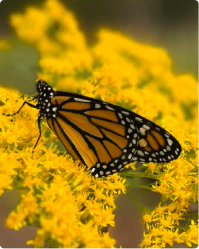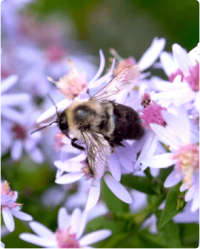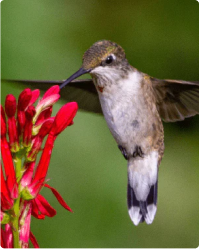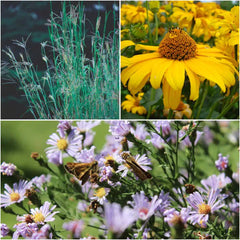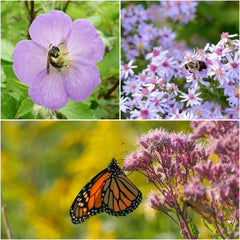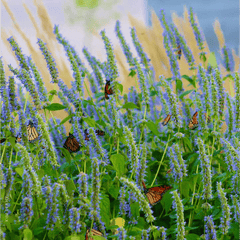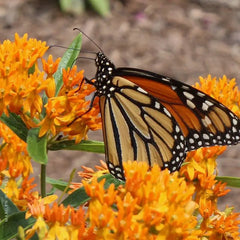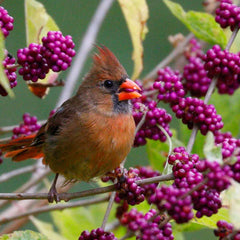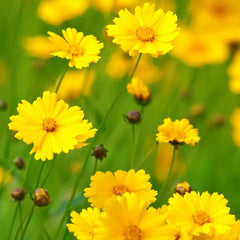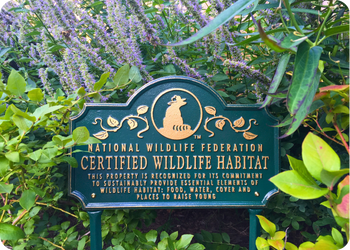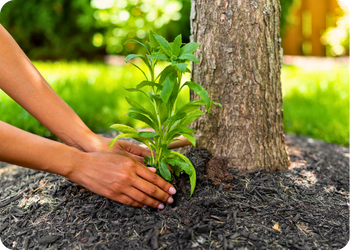The Dance of Nature: How Native Plants Sleep, Creep, and Leap Over Time

Sleep, creep, leap: how plants grow over time
Nature is a masterful choreographer, and native plants play a fascinating role in its grand performance. Just like the intricate steps of a dance, some plants exhibit a remarkable growth pattern known as "sleep, creep, and leap." It’s the journey of many perennial native plants as they establish their roots, expand their presence, and ultimately flourish in their natural habitats.
The Sleep Stage
The sleep stage represents the initial period after a native plant is established, typically year one. During this phase, the plant may appear dormant, but it’s conserving energy and focusing on root development beneath the surface. Above ground, growth may seem minimal, but crucial processes occur underground. Perennial native plants take this time to establish a strong foundation, extending their roots deep into the soil, seeking vital nutrients, and ensuring stability. More on native plant roots below, but know this preparatory period sets the stage for the plant's future growth and success.
The Creep Stage
The “creep” stage refers to year or season 2 of the plant’s journey. Once native perennials have firmly anchored themselves, they enter the creep stage, a period of slow and steady growth. During this phase, the plant allocates resources towards foliage expansion and further root development. As the plant begins to grow upward, new shoots emerge, gradually spreading horizontally and establishing a stronger presence. The gradual creeping expansion allows native plants to colonize the available space, often forming dense patches that provide numerous ecological benefits. Native plants at this stage contribute to soil stabilization, prevent erosion, and provide habitat for various organisms.
The Leap Stage
The most visible payoff starts in year 3. The leap stage is the climactic moment in the life cycle of perennial native plants, where their growth and reproduction reach their peak. After a period of sleep and creep, the plant exhibits a burst of energy, resulting in rapid growth and a bold display of vibrant colors and blooms. This phase is often triggered by favorable environmental conditions such as an increase in sunlight, ample rainfall, or specific temperature thresholds. Native plants seize these opportunities, seizing the spotlight as they attract pollinators, disperse seeds, and perpetuate their species.
If you choose the right native plants for your area, you’ll continue to see your plants come back to life for years to come in their full glory with little maintenance. Some native plants even disperse seeds, going on to grow new plants that will embark on the same sleep, creep, leap journey.

How are native plant roots different?
While you may not see growth above ground initially, know that the magic is happening below. Over these stages, it’s really the roots of a native plant that are growing the most, and making it strong enough to come back year after year.
The roots of native plants differ from those of non-native or invasive species in several significant ways. These differences reflect the plant's adaptation to its specific habitat through evolution in its local environment. Here are some key distinctions that set native plant roots apart:
- Deep and Extensive Root Systems: Native plants often possess deep and extensive root systems that allow them to efficiently access water and nutrients. These roots penetrate deeper into the soil compared to shallow-rooted non-native species. This adaptation helps native plants survive in arid or drought-prone regions by tapping into groundwater reserves.
- Erosion Control: Native plant roots often have extensive networks that aid in soil stabilization and erosion control. They help bind the soil particles together, reducing the risk of erosion caused by wind or water. Native plants are essential in maintaining healthy riparian zones, preventing sediment runoff into water bodies and preserving water quality.
- Carbon Sequestration: Native plant roots contribute to carbon sequestration by storing carbon in the soil. Their extensive root systems enhance organic matter accumulation, improving soil structure and fertility. This process helps mitigate climate change by removing carbon dioxide from the atmosphere and storing it in the ground.
- Adaptation to Fire: In fire-prone ecosystems, native plants have evolved various adaptations to cope with wildfires. Some native plants possess specialized root structures that allow them to resprout quickly after a fire, enabling them to recover and thrive in post-fire environments. Others have thick bark or underground root crowns that protect them from the intense heat.
- Biodiversity Support: Native plant roots support biodiversity by providing habitat and food sources for a wide array of soil-dwelling organisms. They promote the growth of beneficial soil microorganisms, such as bacteria and fungi, which contribute to nutrient cycling and the overall health of the ecosystem. Native plant roots also attract beneficial insects and provide shelter for various organisms.
- Coevolution with Wildlife: Native plant roots have coevolved with local wildlife, creating intricate relationships. The presence of specific root structures and chemicals can attract beneficial insects for pollination or repel pests. Native plants often provide food, such as nectar, fruits, or seeds, that support the diet of native wildlife, contributing to the overall health of the ecosystem.
By understanding and appreciating the unique characteristics of native plant roots, we can better appreciate their ecological importance and make informed decisions in habitat restoration, landscaping, and conservation efforts. Planting native species and preserving natural habitats allows us to conserve these valuable root systems and the biodiversity they support, ensuring the health and resilience of our ecosystems.
The Ecological Importance: Wait for it
Understanding the sleep, creep, and leap stages is not only fascinating but also essential in appreciating the ecological value of native plants. By adapting to their local environments over generations, these plants have developed intricate relationships with local wildlife, pollinators, and other organisms. Native plants provide vital sources of food, shelter, and breeding grounds for a diversity of species, including numerous insects, birds, mammals, and more. Their deep root systems enhance soil health, improving water infiltration and reducing erosion. As they progress through these stages, your native plants establish strong roots, expand their presence, and ultimately will bloom bountifully for all to enjoy year after year.
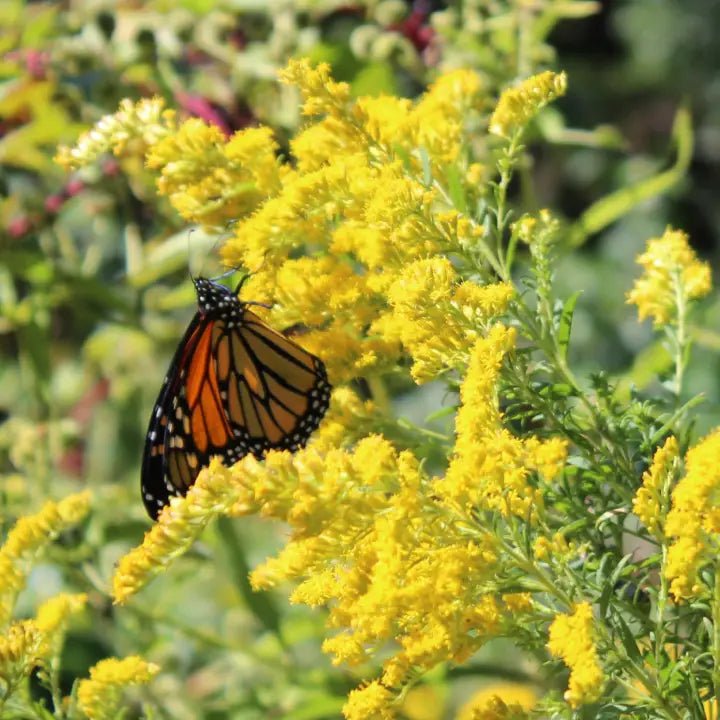
Find Native Plants by Zip Code
We took the guesswork out of planting native. Check your zip to see what ships!
